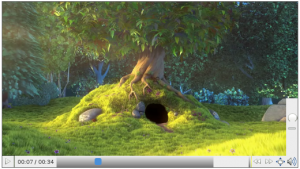I departed from A Coruña, flying to Barcelona (where I had time to have a coffee with a friend), then to Vienna and then to Brno by bus. It was a bit tiring so after having a quick drink at our hotel with the rest of the Igalians, I just went to bed.
Web, the future is now by my Igalian friend Claudio Saavedra (different from Garnacho) was my first talk (apart from the keynote). Even after knowing the content already, I found quite interesting the way Claudio spoke about the latest changes in the development of Web (a.k.a. Epiphany), specially the way WebKit 2 helps to provide a much better user experience.
I liked a lot Alex Larsson’s talk of High resolution display support in GNOME. His approach of the abstract pixels and all the way down in the stack from GTK+ was very interesting.
Matt Dalio and his Endless Mobile project just rock, not only because of the tech and GNOME involved but also because of its social implications. Keep going!
Given the rest of my career and my work in WebKit, specially in the WebKitGTK+ port, I am always interested in GStreamer, as it is the framework we use use for multimedia playback (and other ports like EFL and Qt in Linux). What’s cooking in GStreamer talk by Sebastian Dröge and Tim-Philipp Müller was of course mandatory and worth going.
Jan-Christoph Borchardt’s talk about GNOME and ownCloud: desktop plus web for a holisic experience showed everything that is and is coming with ownCloud. I introduced him to Claudio as he mentioned that he would like to see at least Ephy’s bookmarks syncronized with ownCloud. It looks interesting.
I missed Philip Withnall’s talk about Testing online services because it was at the same time as the ownCloud one, but I was interested because of my wife‘s research project about the same subject. Philip, if you read this, leave me a comment or get in touch directly with her as she was very interested.
It is always refreshing to attend Marina Zhurakhinskaya’s talk about Outreach Program for Women: a lesson in collaboration, because I think it is very important to keep reminding ourselves about the relevance of programs to integrate more women into our community and I think we, and specially Marina and the OPW program, get always awesome results, though we cannot fall asleep and keep pushing till, at least, the 50%.
My Igalian friend Juan Suárez had a talk called Writing multimedia applications with Grilo where he showed the easy but powerful possibilities of the Grilo API and its plugins. There was also a lightning talk by an intern about adding support to build Lua plugins for Grilo.
Juan Pablo Ugarte was showing off his Glade skills in his talk about Rich custom user interfaces with Glade and CSS. His slides were made with Glade. Cool!
More secure with less “security” by Stef Walter had a lot of interesting ideas about how to improve security and making at the same time the user’s life easier.
Just after lunch it was the turn of my Igalian friend Martin Robinson who gave the talk about Webkit2 and you and explained many things about the WebKit 2 model, like for example all its layers and how the processes work.
There was another talk given by other fellow Igalians, Alejandro Piñeiro and Joanmarie Diggs, called Tag, your PDF is it that I couldn’t attend. In that case I preferred to prioritize other talks as I can always easily talk to them.
The rest of the talks I attended were:
- News from the GNOME OSTree project by Colin Walters
- FLOSS Communities outreaches by Flavia Weisghizzi
- Prototyping in the 4th dimension by Jakub Steiner
- GNOME Outreach: from three point zero to hero by Sriram Ramkrishna
- Cogl: Having fun with GPU graphics by Robert Bragg
- Wayland: The future of Linux graphics is here by Robert Bradford and the panel after it
- FOSS & education by Emily Gonyer
- Documentation: state of the uniona by Ekaterina Gerasimova
Of course it would not be a GUADEC without hanging out with friends at the different parties, one of them sponsored by Igalia and Red Hat.
I really enjoyed the tour at the city, which is very beatiful and peaceful, though we had to finish it prematurely because of the impresive storm. On our way back from our unofficial GNOME Hispano dinner, which of course was great, to our hotel, we could see some broken tree branches and even what we think that were some fallen young trees.
The venue was really a nice place (with funny chairs) and the volunteers did an awesome job (THANKS!). Of course, there are always issues, like the AC problem (these things can always happen) and the internet connection which is an inherent problem to almost every GUADEC.
Wonderful work also of Ana, taking a lot of cool pictures, even from me, that you can see in her Flickr collections.
Of course, I cannot forget to thank Igalia for sponsoring my trip.
Strasbourg, there we go!







